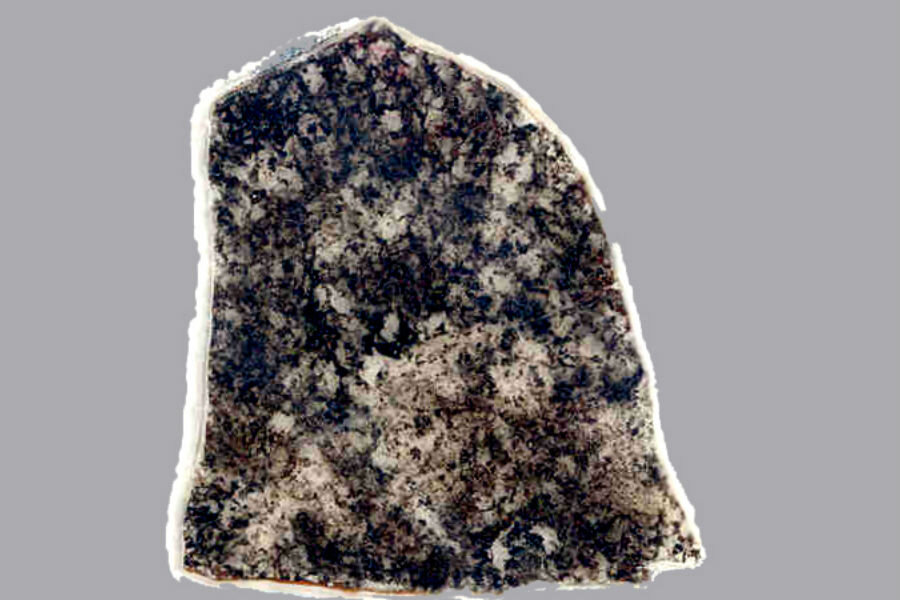How a microbe's non-evolution could confirm Darwin's theory
Loading...
Scientists say they have uncovered evidence for sulfur-loving microbes that appear to have been put on evolutionary hold for more than 2 billion years, remaining virtually unchanged during that period.
If the team's analysis holds up, it would provide a striking confirmation of the theory of evolution, the researchers suggest.
Evolution occurs in response to changes in an organism's physical or biological environment, explains William Schopf, a geobiologist at the University of California at Los Angeles and the lead author of the analysis, published this week in the Proceedings of the National Academy of Sciences.
There is plenty of evidence for this aspect of evolution in the fossil record and in existing organisms, the researchers note.
But if those conditions don't change, "the prediction would be that life shouldn't change," and that's what the team found, he says.
In this case, the stable environment is ancient and modern sea-floor muck beneath enough water to be isolated from wave action or other forms of mixing that could alter conditions within the sediments.
A key piece of the puzzle fell into place in 2007, when Chilean researchers Victor Gallardo and Carola Espinoza published their discovery of communities of thread-like bacteria found beneath undersea mud along the west coast of Central and South America and out to the Galapagos Islands. These thrived in a cold, sulfur-rich, oxygen-deprived environment.
The duo, from the University of Concepción in Biobío, Chile, suggested that communities of these organisms appear worldwide and likely have been populating the planet for billions of years. The work was part of a decade-long global effort to conduct a census of marine life, including microbes.
Fast forward five years. Dr. Schopf was a visiting professor at the University of New South Wales in Sydney, Australia, when a geologist handed him some rock samples a from 2.3-billion-year-old formation in western Australia. Within a few weeks, Schopf had touched base with the Chilean researchers and concluded that the microfossils in the samples he'd received were essentially the same organism.
After returning to UCLA, he revisited rock samples he'd collected 30 years earlier from another rock formation in western Australia. The rocks were 1.8 billion years old and contained what had been puzzling microfossils. Sure enough, the bacteria appeared in those samples as well.
Ideally, researchers would use genetic analyses to explore the relationships between different populations of these bacteria. But as microbes become fossils, their genetic material is destroyed. Scientists then have to rely on comparing shapes and sizes of the bacteria, the similarities or differences in the rock formations that encased them, mineral evidence for the environment they inhabited back in the day, and the physical layout of the communities they built.
When the team, which included researchers from the United States and Australia, as well as the two Chilean scientists, made the comparisons, the two ancient populations and the living populations were essentially the same – both thriving in oxygen-free, light-free, sulfur-laden marine mud.
The evidence is compelling, Schopf suggests. But it will take time to fill out the picture.
The idea that these bacteria confirm Darwin's theory is based on three populations, compared with light-loving bacteria associated with ancient and modern stromatolites – rock formations that form in shallow water as the waste from bacterial communities on them acts as glue to bind tiny grains of sediment. Ancient and modern versions of these have been studied for decades.
The sulfur-cycling bacteria's habitat, buried in deep-sea sediments, "has essentially not been investigated by paleontologists, so we didn't know what was there," Schopf says.
Now that these first results are out, researchers will explore other deposits, "and I think we're going to find exactly the same types of organisms right up through geological time," he adds.
Still, circumspection remains the order of the day for now.
"Such findings may eventually be regarded as having confirmed the null hypothesis of Darwinian evolution," the team writes. "But such an assessment, at present, would be premature."






